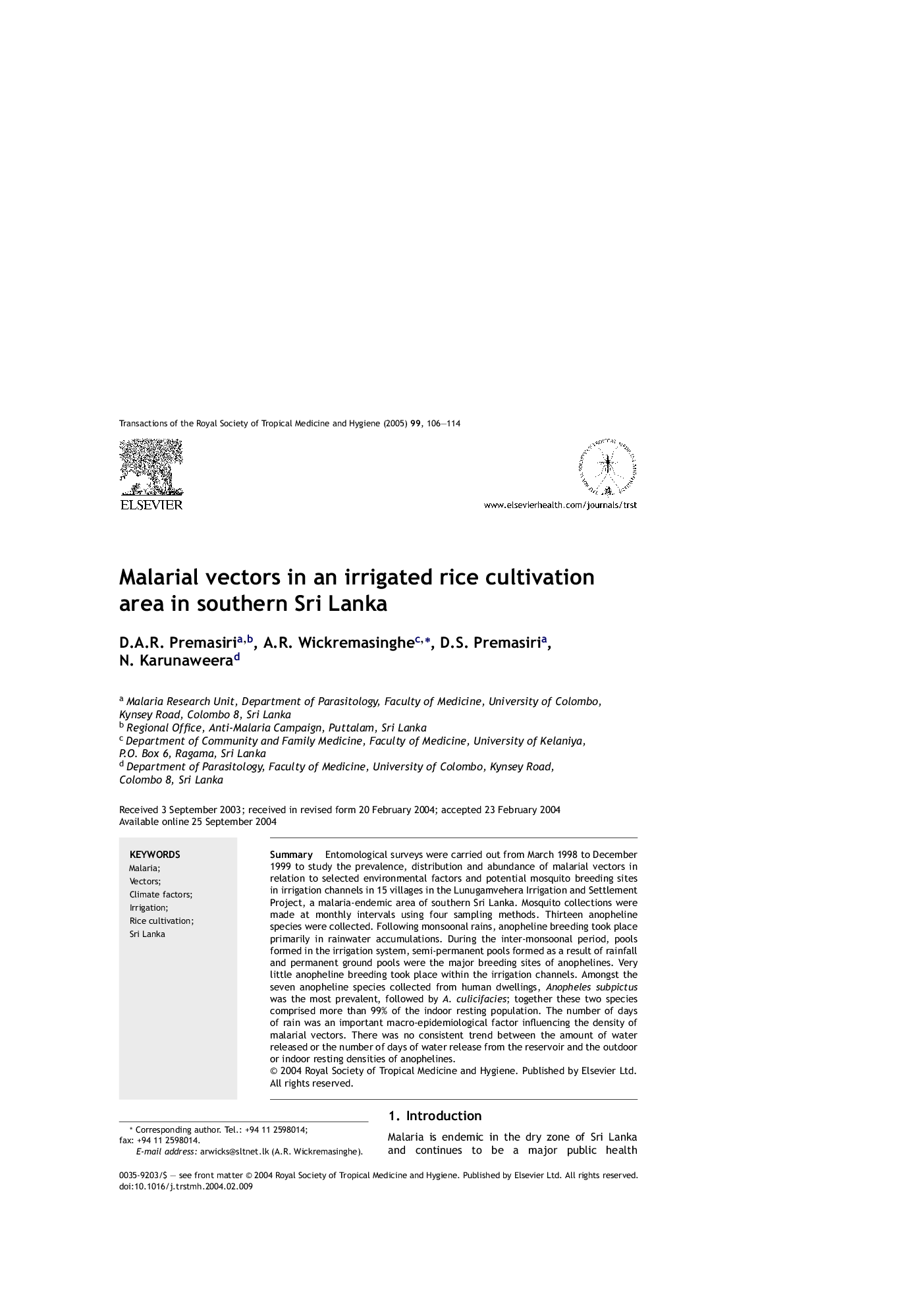| Article ID | Journal | Published Year | Pages | File Type |
|---|---|---|---|---|
| 10030650 | Transactions of the Royal Society of Tropical Medicine and Hygiene | 2005 | 9 Pages |
Abstract
Entomological surveys were carried out from March 1998 to December 1999 to study the prevalence, distribution and abundance of malarial vectors in relation to selected environmental factors and potential mosquito breeding sites in irrigation channels in 15 villages in the Lunugamvehera Irrigation and Settlement Project, a malaria-endemic area of southern Sri Lanka. Mosquito collections were made at monthly intervals using four sampling methods. Thirteen anopheline species were collected. Following monsoonal rains, anopheline breeding took place primarily in rainwater accumulations. During the inter-monsoonal period, pools formed in the irrigation system, semi-permanent pools formed as a result of rainfall and permanent ground pools were the major breeding sites of anophelines. Very little anopheline breeding took place within the irrigation channels. Amongst the seven anopheline species collected from human dwellings, Anopheles subpictus was the most prevalent, followed by A. culicifacies; together these two species comprised more than 99% of the indoor resting population. The number of days of rain was an important macro-epidemiological factor influencing the density of malarial vectors. There was no consistent trend between the amount of water released or the number of days of water release from the reservoir and the outdoor or indoor resting densities of anophelines.
Related Topics
Life Sciences
Immunology and Microbiology
Applied Microbiology and Biotechnology
Authors
D.A.R. Premasiri, A.R. Wickremasinghe, D.S. Premasiri, N. Karunaweera,
